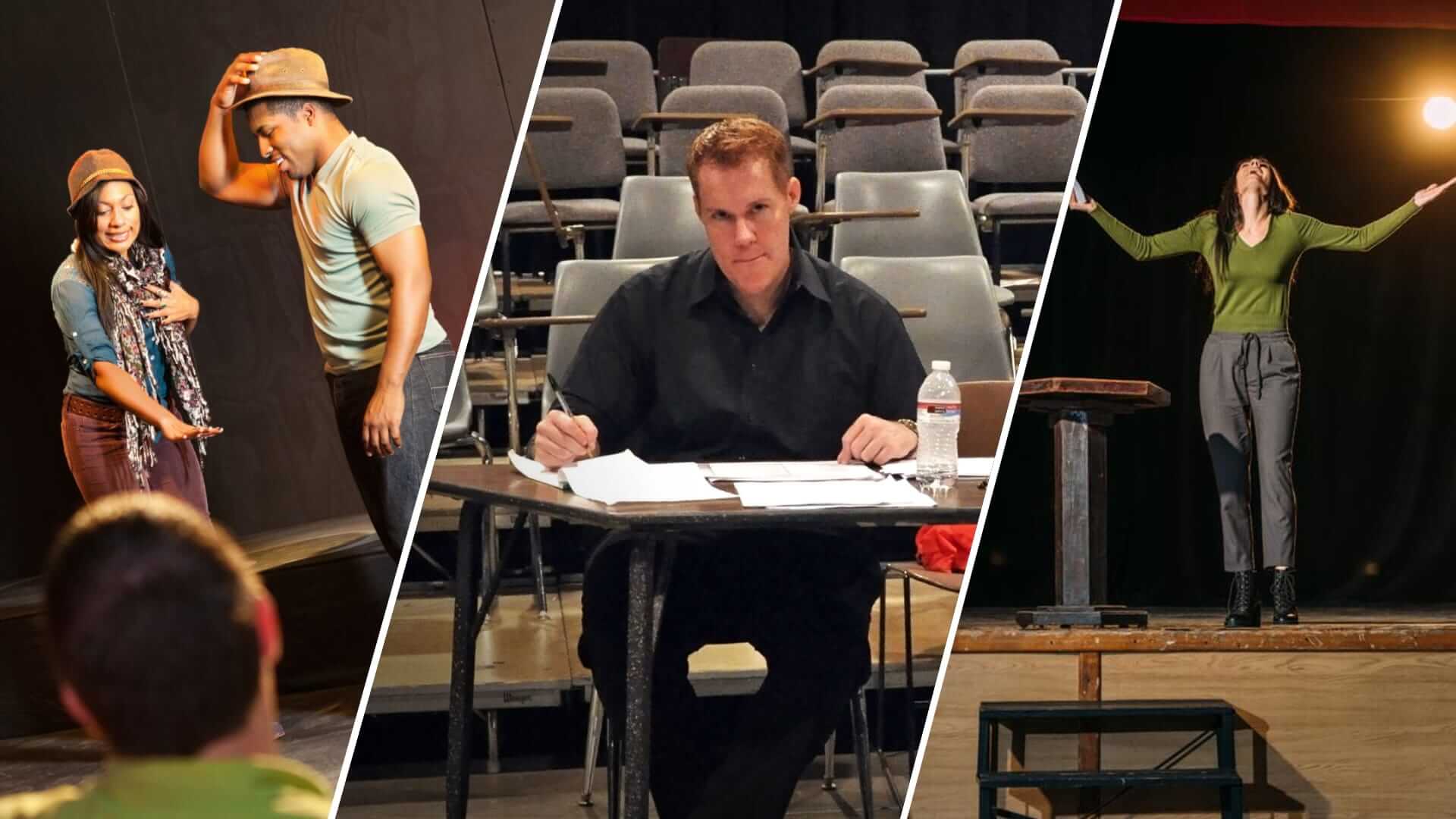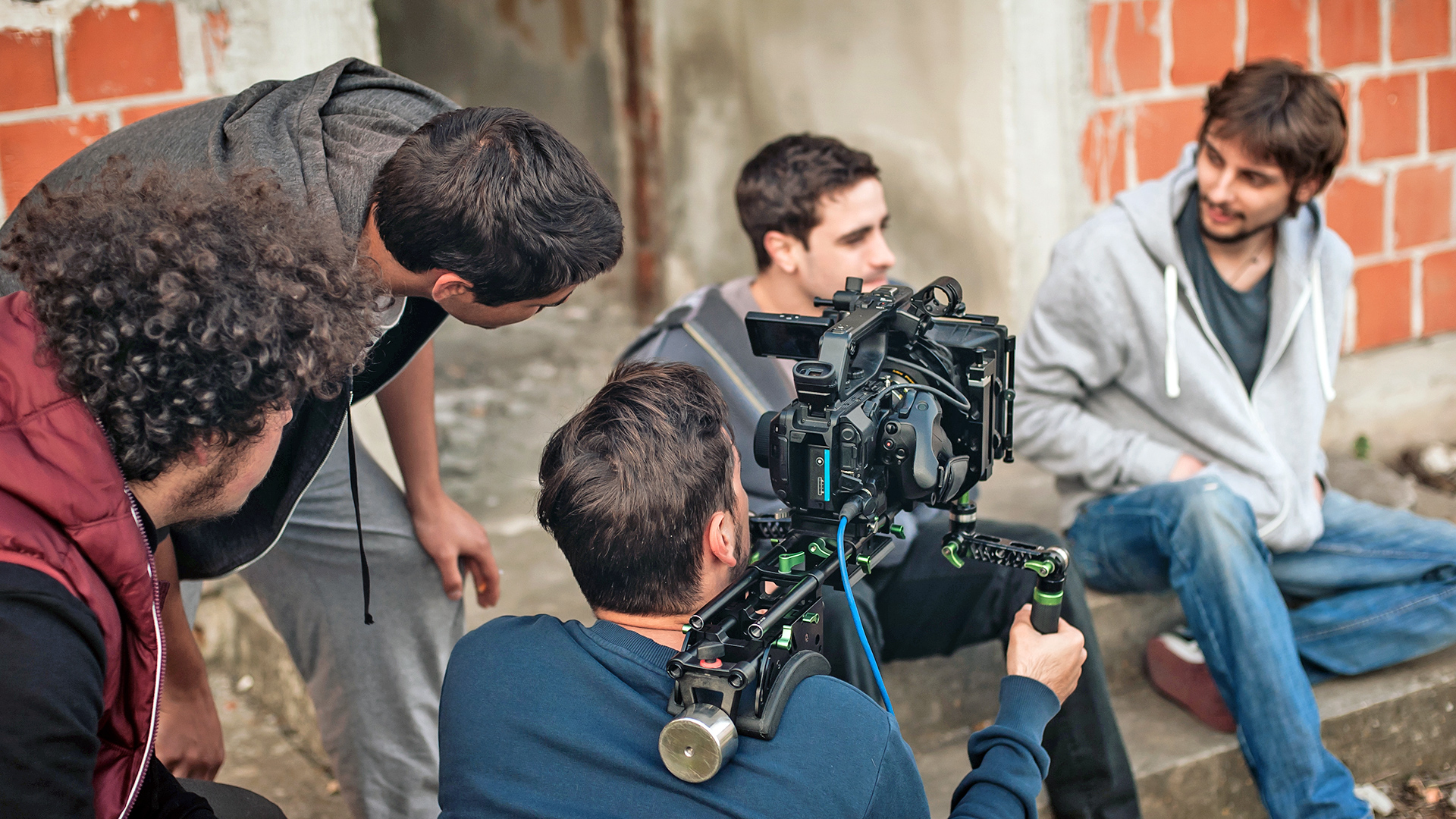Acting is often perceived as a glamorous profession, with actors in the spotlight performing in movies or TV shows. However, the world of acting encompasses a wide range of jobs that go far beyond the big screen. Actors work in various environments, from the stage to commercials, and even behind the scenes in roles that many may not realize.

The Different Roles Actors Can Play in Film, TV, and Theatre
Film and TV Acting Jobs
Actors in film and television take on various roles that require a deep understanding of character development, emotional expression, and the ability to work within a collaborative setting.
- Lead Actor: As the face of the movie or show, lead actors carry significant responsibility. They bring the central character to life, often facing the heaviest emotional and physical demands. For example, Leonardo DiCaprio’s portrayal of Hugh Glass in The Revenant required rigorous physical preparation and intense emotional delivery, showing how lead actors are expected to immerse fully into their roles. Their performance can make or break the project.
- Supporting Actor: While not the focal point, supporting actors play vital roles in enhancing the storyline and adding layers to the main character’s journey. They are often used to push the narrative forward or to provide contrast to the lead actor. For example, Robin Williams in Good Will Hunting was a supporting actor, yet his performance was central to the emotional depth of the film.
- Cameo Roles: Cameo appearances are brief but impactful. Actors in these roles may appear for only a few seconds or minutes but often leave a lasting impression. A famous example is Stan Lee, who had cameo roles in every Marvel movie.
- Voice Acting: Voice actors lend their voices to animated characters, commercials, video games, and even narration in documentaries. Tom Hanks, for instance, voiced Woody in Toy Story, becoming one of the most beloved characters in animation history. Voice acting requires clarity, emotive expression, and the ability to convey character nuances without relying on physical presence.
- Extras: Extras, often overlooked, are background actors who populate scenes to create a more realistic environment. While they don’t have speaking roles, their contribution helps to establish the setting of a scene, whether in a bustling city or a quiet village. A notable use of extras can be seen in films like Titanic, where hundreds of background actors were used to recreate the chaos of the ship’s sinking.
Theatre Acting Jobs
Theatre offers a different dynamic for actors, as performances are live, and actors must engage directly with the audience. This requires spontaneity and an ability to adapt to unexpected circumstances during live shows.
- Lead Roles in Theatre Productions: Actors in leading theatre roles carry the same weight as their counterparts in film, with the added pressure of performing live. For instance, Idina Menzel’s role as Elphaba in Wicked showcased her ability to perform complex songs and deliver emotional intensity night after night. Unlike film, theatre actors must perfect their timing and interact with live audiences, often improvising when necessary.
- Supporting Theatre Roles: Just like in film, supporting actors in theatre add depth to the story. They often have significant parts in musical numbers or key dramatic moments, contributing to the emotional texture of the production.
- Ensemble Members: The ensemble is the backbone of many theatre productions, especially in musicals. Ensemble actors are versatile, often singing, dancing, and acting in multiple scenes. They may switch between different characters, showcasing their adaptability and range.
- Understudy or Swing: Understudies are actors who memorize the roles of lead actors and are prepared to step in if needed. Swings are even more flexible, covering multiple ensemble roles in case of illness or absence. This type of work requires an extensive understanding of various characters and a readiness to perform at a moment’s notice.
Actors in film, TV, and theatre take on various roles that showcase their range and versatility. Whether leading a blockbuster or performing in an intimate theatre production, actors contribute to storytelling in ways that captivate and engage audiences across different mediums.

Behind the Scenes Jobs Actors Do
While most people are familiar with on-screen or stage acting, actors often take on roles behind the scenes that are equally important for the production of movies, TV shows, and even video games. These jobs demand a different set of skills and offer opportunities for actors to expand their careers beyond traditional acting roles.
Voiceover Work
Voiceover work is one of the most sought-after behind-the-scenes jobs for actors. It involves using the voice to convey characters, narrate stories, or sell products, without the need for physical appearance. Voice actors bring life to animated characters, commercials, radio advertisements, audiobooks, and even navigation systems.
- Voice Acting in Animation: Many animated movies and TV shows rely on the talents of voice actors to create memorable characters. For instance, Tom Hanks as Woody in Toy Story and Ellen DeGeneres as Dory in Finding Nemo became iconic characters purely through their vocal performances. Voice actors must convey emotion, timing, and personality with just their voice, often working in isolation from other actors.
- Commercial Voiceovers: Many actors lend their voices to commercials and advertisements. These range from radio ads to TV and online commercials. Voiceovers for commercials often require actors to have clear articulation and the ability to adjust their tone depending on the target audience.
- Audiobook Narration: Narrating audiobooks is another lucrative opportunity for actors. Jim Dale, for example, famously narrated the Harry Potter series, bringing each character to life with distinct voices. This type of work requires stamina and the ability to maintain consistency across long stretches of narration.
Motion Capture Work
Motion capture, or “mocap,” has become an essential part of the filmmaking and video game industries. Actors wear special suits that track their movements, which are then translated into digital characters using CGI (computer-generated imagery).
- Acting in Motion Capture Roles: Motion capture acting combines physical performance with digital technology. For example, Andy Serkis is renowned for his motion capture roles, particularly as Gollum in The Lord of the Rings and Caesar in Planet of the Apes. This type of work requires actors to have a strong understanding of physical acting, as their movements and expressions must translate convincingly to animated or CGI characters.
- Mocap for Video Games: Video games also rely heavily on motion capture for realistic character movements. In games like The Last of Us or Uncharted, actors provide not only the voice but also the physical performance that creates lifelike action sequences. This job often involves physical exertion, and actors need to be prepared for extensive action sequences and repetition.
Stunt Acting
Stunt acting involves performing dangerous physical feats that are either too risky or too complex for regular actors to undertake. These can include anything from high-speed car chases to fight scenes or jumping off buildings.
- Stunt Doubles: Many actors use stunt doubles to perform these high-risk actions. Stunt doubles often resemble the main actors and step in for scenes involving dangerous stunts, ensuring the actor’s safety while maintaining the authenticity of the scene. Famous stunt double collaborations include Tom Cruise, who frequently works with stunt experts despite doing many of his own stunts, and Keanu Reeves, whose stunt team helped create the intense fight scenes in John Wick.
- Actors Performing Their Own Stunts: Some actors choose to perform their own stunts, especially in action films. This requires intense physical training and mental preparation. Tom Cruise, for instance, is famous for performing his own stunts in the Mission Impossible series, from scaling skyscrapers to performing high-speed helicopter chases. These performances add a layer of authenticity to the film, but they also come with a higher level of risk.
Behind the scenes, actors take on various roles that are just as demanding as their work in front of the camera. Whether it’s using their voice to bring animated characters to life, performing in a motion capture suit for a video game, or risking injury in a dangerous stunt, these jobs require actors to stretch their skills and adapt to different forms of performance.

Jobs Actors Do Outside of Traditional Acting
Beyond the well-known roles in film, television, and theatre, many actors branch out into a variety of other jobs that may not involve acting at all, but still leverage the skills they’ve honed throughout their careers. These alternative paths provide actors with additional income streams and creative outlets, allowing them to remain involved in the industry in unique ways.
Acting as a Teacher or Coach
One of the most common ways actors extend their careers is by teaching the craft to the next generation of performers. Experienced actors can become drama teachers or acting coaches, helping others refine their skills, gain confidence, and understand the complexities of performance.
- Drama Schools and Universities: Some actors transition into teaching full-time or part-time at drama schools, universities, or community centers. Viola Davis, for example, taught acting classes while building her career. Teaching allows actors to share their industry knowledge and contribute to developing new talent.
- Private Acting Coaching: Many actors provide one-on-one coaching sessions for aspiring performers. These sessions can focus on specific areas like monologue delivery, audition preparation, or character development. Actors like Larry Moss, who has coached stars like Leonardo DiCaprio and Hilary Swank, have made a name for themselves in this arena. Coaching requires actors to be patient and skilled in giving constructive feedback.
- Workshops and Masterclasses: Workshops and masterclasses provide a more flexible teaching format, allowing actors to run short-term programs. These classes can be highly specialized, focusing on specific techniques or acting methods, and are often attended by both beginners and professionals looking to refine their skills.
Hosting and Presenting Jobs
Another popular job for actors outside of traditional acting roles is hosting or presenting. Actors often have excellent public speaking skills, a charismatic presence, and the ability to engage an audience, making them ideal candidates for hosting television shows, events, or podcasts.
- Talk Show Hosting: Many actors have successfully transitioned to hosting talk shows. For example, Ellen DeGeneres, originally known for her acting and stand-up comedy, became a household name as the host of The Ellen Show. Hosting involves conducting interviews, managing live audiences, and maintaining a consistent and appealing on-screen personality.
- Award Shows and Live Events: Actors are frequently tapped to host award shows or large public events. Hugh Jackman, for instance, has hosted the Oscars, combining his acting skills with his stage presence to entertain millions. Hosting live events requires improvisation skills, confidence, and the ability to manage large-scale productions under pressure.
- Podcast or Online Series Hosting: With the rise of digital content, many actors now host podcasts or web series. These platforms allow actors to explore topics outside of acting, whether it be current events, pop culture, or even niche subjects. Actors like Dax Shepard, who hosts the popular podcast Armchair Expert, have found success in this new medium.
Commercial Acting
While many actors focus on securing roles in movies or television, commercial acting offers a steady stream of income and can often be a more accessible entry point into the industry.
- Television and Online Commercials: Commercials for brands, products, and services require actors to convey messages quickly and effectively. Whether it’s a lighthearted ad for a fast-food chain or a more serious public service announcement, actors must adapt their performances to fit the tone of the advertisement.
- Endorsement Deals: Well-known actors often sign endorsement deals where they become the face of a brand. George Clooney, for instance, has had a longstanding endorsement deal with Nespresso, appearing in commercials and marketing campaigns globally. Endorsement deals can be highly lucrative and often extend an actor’s public image beyond their film roles.
Modeling for Print and Commercials
Many actors, particularly those with a high public profile, branch out into modeling as part of their career expansion. Whether it’s appearing in fashion campaigns, magazine covers, or product advertisements, modeling offers another revenue stream and creative outlet.
- Print and Fashion Campaigns: Actors frequently appear in print ads for luxury brands or fashion houses. Emma Watson, for example, has been featured in multiple campaigns for Burberry and Lancome. These campaigns often require actors to embody the brand’s image, which can range from glamorous to relatable.
- Product Commercials: In addition to appearing in TV ads, actors also model for product commercials, especially for cosmetics, clothing, or lifestyle brands. The line between acting and modeling blurs in this field, as actors must use their image and personality to sell the product.
Actors working outside of traditional acting roles demonstrate the versatility of their skills. Whether teaching the next generation of performers, hosting major events, or representing brands in commercial work, these jobs allow actors to extend their influence and creativity far beyond the stage and screen.